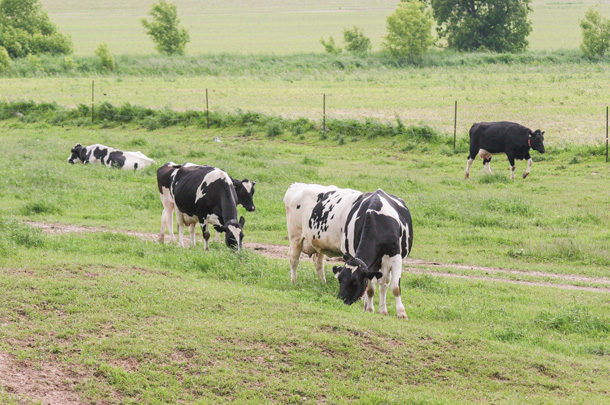If you are interested in becoming an organic operation, good records are essential, says Kristen Adams, certification service director at Midwest Organic Services Association (MOSA) Certified Organic. Adams works for MOSA, which is one of the agencies that certify operations as organic. She says her recommendations will help producers in their transition to organic no matter what certifying agency they use.
Producers choose to become organic for a variety of reasons including personal philosophy, health and environmental benefits, access to growing markets and premium prices.
“One of the motivators to transition to an organic market is the price point of organic milk versus the price of conventional milk. Over time, the additional benefits often reveal themselves: Farmers have to take a proactive approach to animal health and nutrition so they see healthier animals, healthier pastures and fields, and the return of biodiversity to their farm,” Adams says.
For fields to become certified, they must be treated as organic for three years. All feed given to dairy cows must be 100% organic, Adams says.
Ruminants must have 30% of dry matter intake from pasture during the grazing season, and they must be grazed the entire grazing season. All organic animals must have access to outdoors, including direct access to sunshine.
Also, animals cannot be rotated between organic and non-organic production.
Although land must be farmed with organic methods for three years and cows must be fed organically for a year before selling certified organic milk, feed grown on land in its third year of transition (will be certified organic next year) can be used to transition dairy animals into organic production. This means organic milk can be shipped three years after the organic certification process starts instead of four, if all requirements are met.
Common mistakes she has seen include not managing dairy cattle organically through their transition. “This included not only using allowed inputs and feed but also meeting the grazing requirements. Many times folks don’t understand that during the year [they] transition to organic production, all livestock over 6 months of age is required to get a minimum of 30 percent of their dry matter intake from pasture during the grazing season and must be allowed to graze the full grazing season,” Adams says.
If you use a product on a field that has a prohibited ingredient, you will need to start over with the three-year certification process; Adams stressed that it’s best to make sure all inputs are approved for organics. “It’s much better to ask for permission than forgiveness,” she says.
She adds that dairies that must take land out of production due to non-compliance can be hit very hard economically when they have to purchase feed.
Another common mistake is not reaching out to a certifier early enough. Adams says, “The logistics of getting through the certification process can be tricky, so apply for certification well in advance of the end of your transition and certainly well before your targeted organic milk ship date. Good communication is key to a smooth certification process.”
Adams also recommends finding an organic producer in your area to be a mentor.
The application to become certified organic will include an Organic System Plan (OSP) created for your operation. A beginning OSP will contain field history, maps, land use agreement with neighbor/ buffers, maps, crop and livestock inputs (fertilizer, health treatments approved by certifier prior to use).
“Your organic system plan is your main document, how you plan to manage your farm, how you intend to manage your livestock. Completing it can seem really daunting the first year you are dealing with it,” Adams says.
Certifiers will have an OSP template for clients to use, she says, based on their specific type of production, including the crops used in the operation.
“The OSP also makes the applicant really think about all the details of how they produce products and how they will improve various aspects of their system over time. How are you going to build the soil on your farm? How are you going to encourage biodiversity? What is your proposed crop rotation for the next six years? What is your plan for reducing the risk of drift?”
Adams says the key to making the process easier is education and connection with community. “Also, use your resources. Don’t hesitate to call your certifier if you have questions, use the National Organic Integrity Database, and develop a record-keeping system that you will actually use.”
The OSP should be considered a living document and must be updated as changes occur.
Once the application is submitted, a certifier will do an initial review. If they feel they can verify compliance to organic standards, the producer’s information is then sent out to an inspector.
All operations are required to be inspected once a year. Producers need to verify changes to their OSP and be sure to have any issues from last year resolved.
An ongoing OSP needs to contain: field records, seed receipts and tags, organic seed search, input receipts, equipment cleanout, harvest and sales records, livestock health records, feed rations, pasture and confinement records, implementation of soil-building crop rotations to reduce erosion and increase biodiversity, fertility management must not contaminate crops, soil or water, and physical barriers to prevent commingling and contamination.
Access the Organic Integrity Database.











